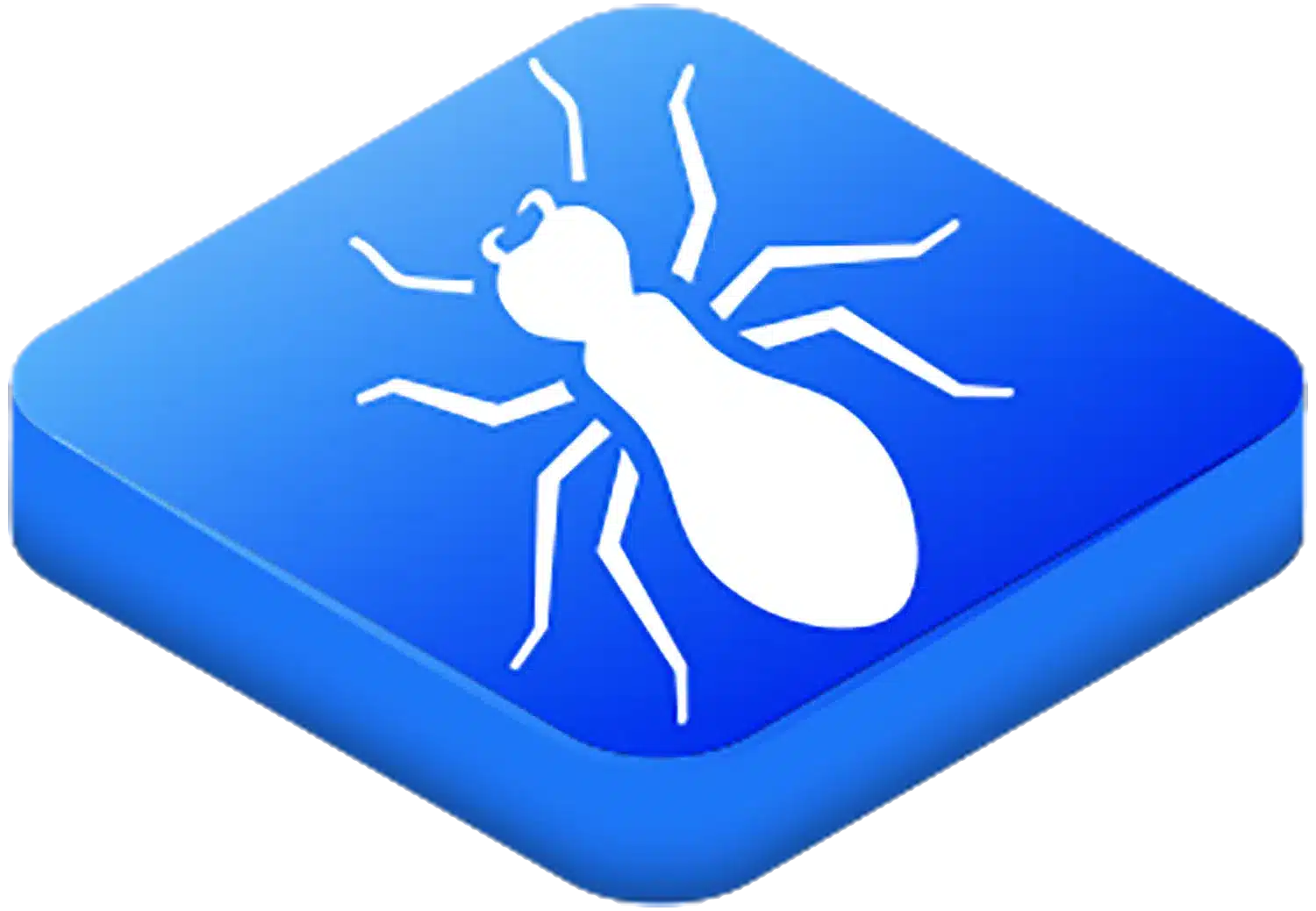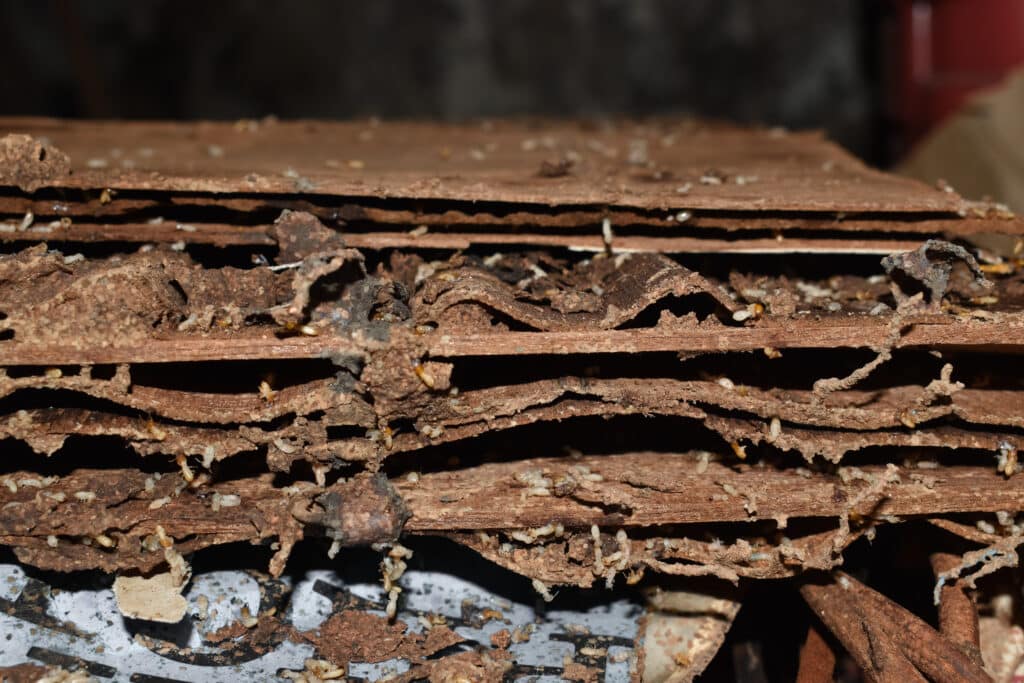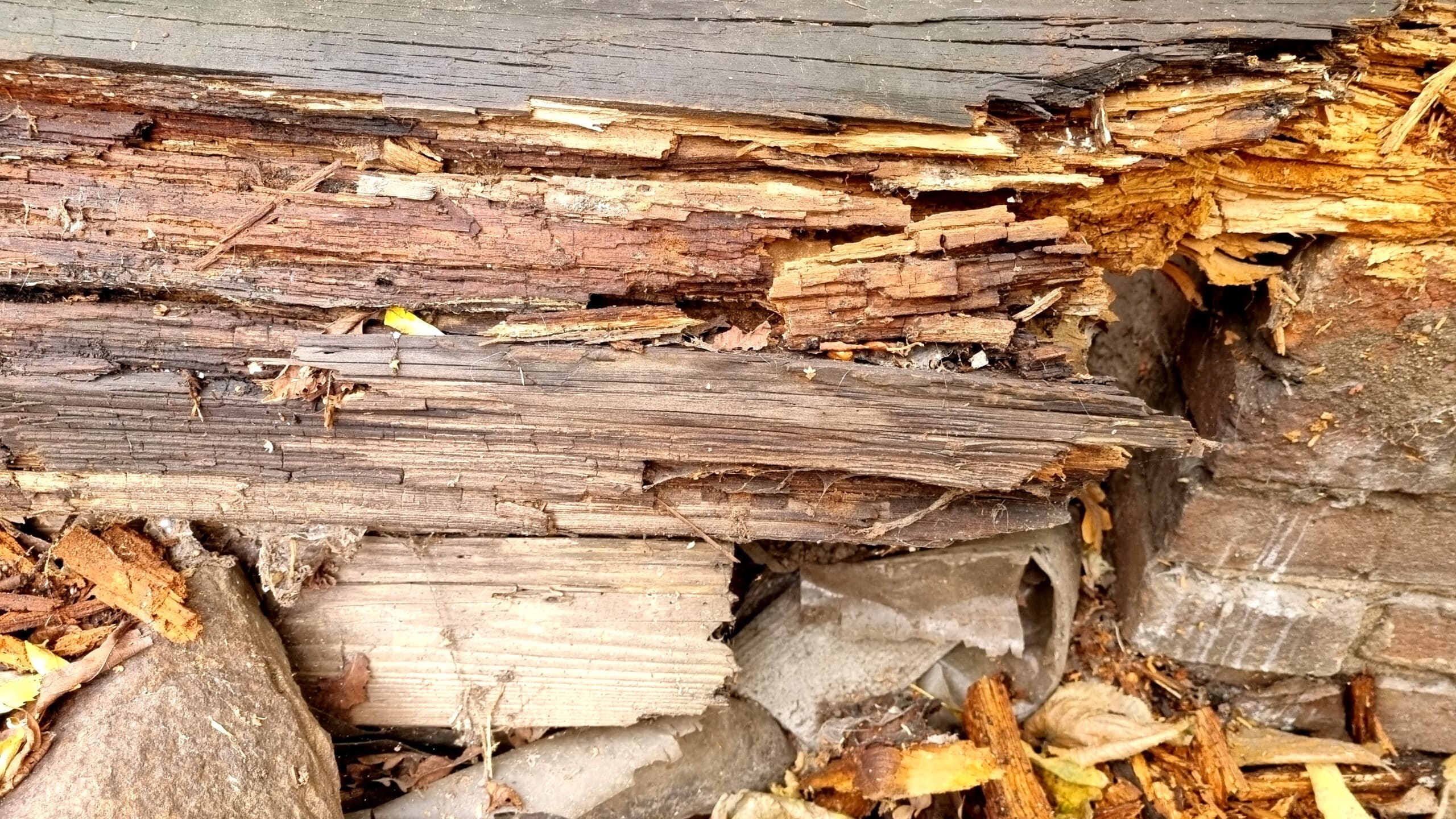
Wood-Destroying Insects in Tennessee: Pest ID Guide
What Are Wood-Destroying Insects?
Wood-destroying insects (WDIs) are pests that damage wooden structures in Tennessee homes and businesses. While these insects play an important role in breaking down dead wood in natural environments, they can cause extensive structural damage to residential and commercial properties when they invade human structures.Common Types of Wood-Destroying Insects
Termites
Termites are among the most destructive wood-destroying insects in Tennessee. They feed on and tunnel through wooden structures, siding, and flooring.
- Size: ⅛ to 1 inch in length
- Color: White, brown, yellow, or black
- Key Feature: Large jaws for chewing wood
- Common Species: Drywood termites, dampwood termites, subterranean termites

Carpenter Ants
Unlike termites, carpenter ants don’t eat wood but excavate it to build their colonies.
- Size: 3 to 13 millimeters in length
- Color: Black
- Key Features: Large jaws for tunneling, heads significantly larger than bodies
- Behavior: Create elaborate tunnel systems in wooden structures
Carpenter Bees
Often mistaken for bumblebees, carpenter bees target wooden structures around your home.
- Size: 12.5 to 25 millimeters in length
- Color: Black bodies with yellow, fuzzy thoraxes
- Key Feature: Create perfectly round entrance holes
- Damage: Less extensive than termites but creates unsightly holes
Wood-Destroying Beetles
Old House Borers
Also known as “longhorn beetles,” these pests target pine, fir, and other soft woods.
- Size: 25 millimeters long
- Color: Dark gray bodies
- Key Feature: Significantly long antennae
- Behavior: Lay eggs in untreated wood, often in lumber yards

Powderpost Beetles
These small beetles can cause significant damage to wooden structures.
- Size: Only 3 millimeters in length
- Color: Reddish-brown
- Behavior: Lay eggs in untreated lumber and wooden furniture
- Signs: Often discovered only after adults emerge from infested wood
Where to Look for Wood-Destroying Insects
Different wood-destroying insects target various areas of your home or business:
- Drywall
- Support beams
- Wood near your foundation
- Hardwood floors
- Baseboards
- Windowsills
- Moist or water-damaged wood (dampwood termites)
- Lumber used in construction (old house borers)
Property Damage Risks
Wood-destroying insects can cause severe structural damage if left untreated.
- Weakened structural supports
- Damaged flooring and siding
- Compromised integrity of wooden elements
- Expensive repairs or replacement of affected wood
Signs of Wood-Destroying Insects
Watch for these common indicators of wood-destroying insect activity:
- Termite mud tubes along foundations
- Piles of discarded swarmer termite wings
- Insect droppings (frass)
- Holes in wooden structures
- Blistered or bubbling wood surfaces
- Paint buckling due to tunnels beneath
- Hollow-sounding wood when tapped
Schedule a Free Inspection
At U.S. Pest Protection, we believe Tennessee residents and business owners shouldn’t have to worry about wood-destroying insects damaging their living spaces or workplaces. Our comprehensive approach includes:
- Placing baited traps between colonies and wood
- Treating wood with WDI repellents
- Applying liquid barriers beneath your property
- Installing environmental barriers and dehumidifiers
Our experts will provide professional insight and effective solutions for any wood-destroying insect problem we find during your free inspection.

